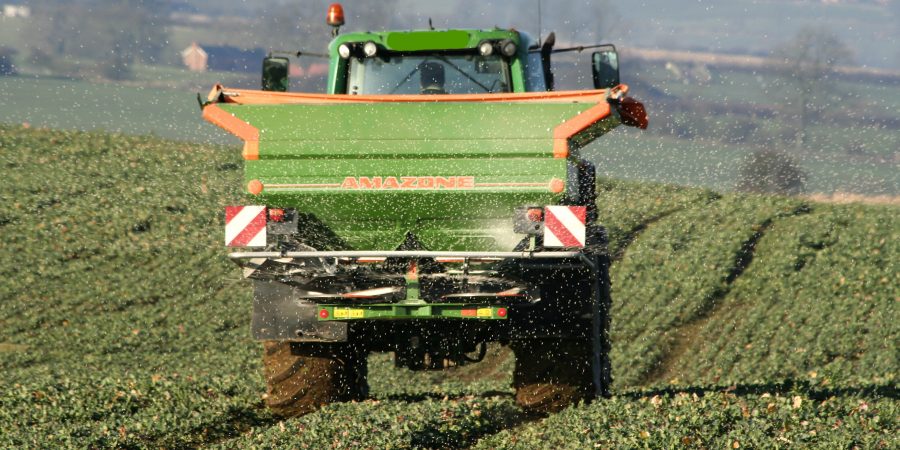Lizzie Batt, Hutchinsons agronomist based out of Canterbury, looks at ways of using organic manures, ammonium nitrate and urea fertilisers more efficiently this spring.
Firstly, the high cost of nitrogen (N) fertiliser has focused our attention on maximising the return on a major investment. Secondly, incoming legislation on urea-based fertiliser has highlighted risks associated with the use of urea as a fertiliser and, thirdly, there is a broader recognition that N fertilisers are the largest contributor to the carbon footprint of crops where N fertiliser is applied, providing further impetus to look at N differently in pursuit of mitigating climate change.
Finally, we have experienced a number of dry springs which have presented challenges in managing N applications to maintain crop uptake.
To start the 2023 season optimistically, we will look at ways of using organic manures, ammonium nitrate and urea fertilisers more efficiently this spring.
Making better use of nitrogen
This is not just about N fertilisers; the value of N in manures has also tripled. Such a valuable resource should be managed with that in mind. An average tonne of poultry manure is now worth more than £50 in available nutrients alone.
Applying manures accurately at the right time and minimising ammonia losses creates a win-win situation, since it means less additional N and a reduction in ammonia emissions.
The soil will typically supply around half the N required as cereals start growing again, but mineralisation of organic N is temperature and moisture dependant. It is unwise to rely on the soil supplying too much early N, especially if the soil temperature is below 5°C at rooting depth.
Ammonium nitrate supplies readily available nitrate N as well as slower release ammonium N. Urea once in soil solution will supply ammonium N. For those using urea for the first time, it is worth knowing that as urea must undergo chemical change to become plant available, it is advisable to apply it earlier than you would ammonium nitrate. Once conditions allow, urea can be applied without any major risks attached.
The best and most consistent results come from front-loading N applications.An application of 80kg once conditions allow helps to meet the early crop demand. Once winter cereals begin rapid growth they will need nearly 20kg of N per week to keep up with demand.
How do you solve a problem like Urea?
Impending restrictions on the use of urea-based fertilisers mean that fertiliser used in the spring of 2024 will need to meet the new guidelines.
Urease inhibitors are effective at reducing the risk of ammonia losses from urea. From 2024 these will need to be used from 1 April each year.
If we experience warm dry conditions in March, there could still be significant N losses from urea.
For liquid N users it is simple to respond to the conditions and include an inhibitor if needed. It’s not so simple for granular urea, which needs to be protected before it is delivered. More people are opting for protected urea, with a urease inhibitor impregnated or applied to the fertiliser prior to bagging. Protected urea offers benefits in terms of performance over untreated urea; increased efficiency of N will inevitably reduce the amount of N needed to meet the optimum N supply.
The fact that legislation is telling us that urea can be inefficient gives us the opportunity to learn how to make it as effective as possible. This is important, given the reduction in the amount of ammonium nitrate that is available for the UK farmer.
The use of methylene urea products as a source of foliar N is a very effective way of maintaining N uptake through dry periods. Bypassing the soil and supplying a source of N that is safe and highly efficient offers further opportunities to rely less on conventional N fertilisers.







